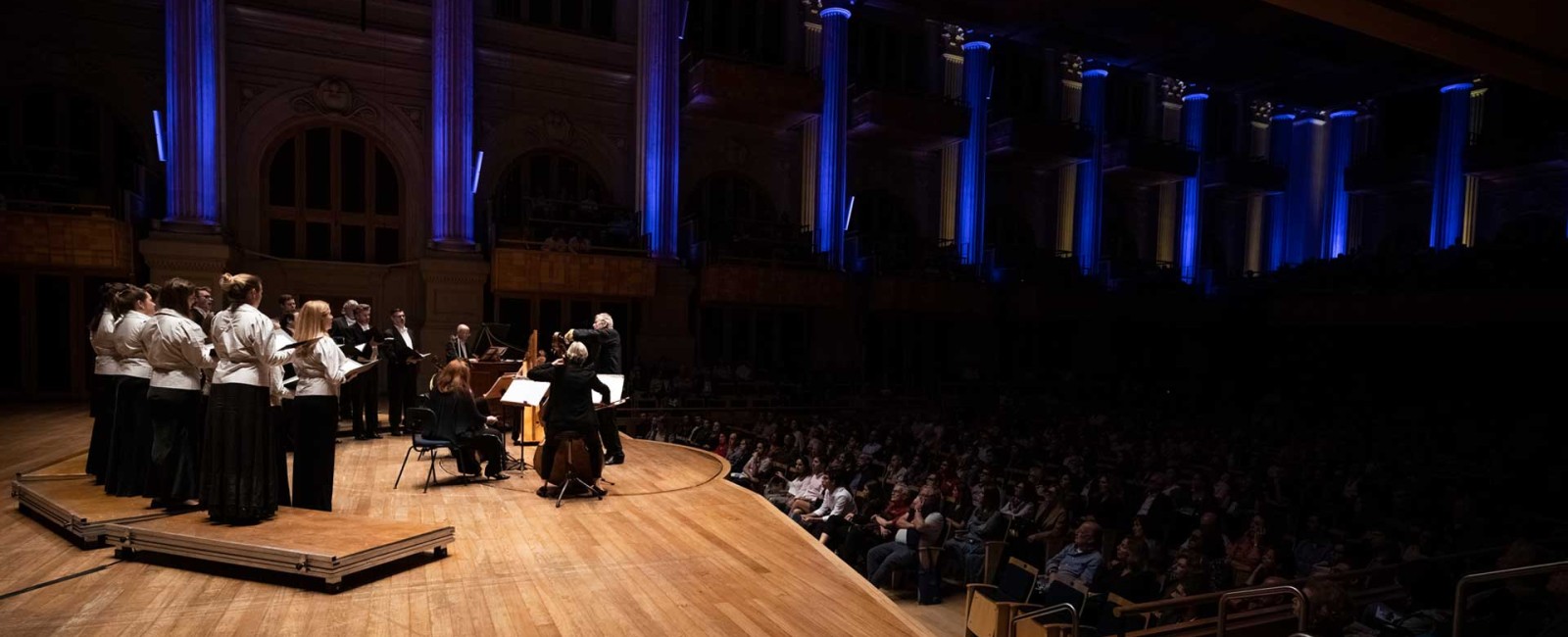
In Autumn 2019, the Monteverdi Choir and English Baroque Soloists, led by John Eliot Gardiner, toured a programme of choral masterpieces across Europe and South America. This project saw the Monteverdi ensembles perform their inaugural concerts in Russia, Slovakia, Brazil, Uruguay, Argentina and Chile. Click here for more info.
REVIEWS
“We will never forget the final choral ‘lamentamini’, which the little caesura between n and t makes the very embodiment of grief”
Kommersant (Zaryadye Hall, Moscow) - click here to read the full review
“Gardiner was with us: The legendary British conductor performed in Russia for the first time… the choir performed incredibly dynamically and expressively.”
SPB Vedemosti (St Petersburg Philharmonia, St Petersburg) - click here to read the full review
“they are literal masters, their souls deeply devoted to Baroque interpretation”
OperaPlus (Slovak Philharmonic, Bratislava) - click here to read the full review
“Gardiner and his wonderful Choir mesmerized the audience… one of the best, if not the best, concerts of the year”
Estadão (Sala São Paulo, São Paulo) - click here to read the full review
“Such soft voices and delicate musicians express, on stage, such strength and power of enchantment. It is as if there is a direct channel with the divine, of pure beauty and worship. Time passes more slowly as the talented artists lend their craft to the honor and glory of divine music.”
Movimento (Teatro Solís, Montevideo) - click here to read the full review
“The vocal colors are expressed with perfect balance and total transparency… simply dazzling”
Clarín (Teatro Colón, Buenos Aires) - click here to read the full review
Click here for images from the tour.
PROGRAMME
Purcell Jehova, quam multi sunt hostes
Monteverdi Messa a 4 voci da cappella
D. Scarlatti Stabat mater
Purcell Hear my prayer, O Lord
Carissimi Jephte
Three Italian choral masterpieces showcase the virtuosity of the Monteverdi Choir, and highlight the changing musical styles in Italy in the 17th and early 18th centuries. Monteverdi’s final setting of the mass, written while he was maestro di cappella of St Mark’s in Venice in the first half of the 17th century, mixes the older polyphonic style with more declamatory passages. Carissimi’s Jephte, a miniature sacred musical drama written in the middle of the 17th century, uses an almost operatic style of solo writing alongside meltingly beautiful choruses to tell the Old Testament story of Jephtha, the Israelite leader forced to sacrifice his own daughter. Domenico Scarlatti’s 10-voice Stabat mater, composed in the early years of the 18th century, combines the old-fashioned polyphonic choral style with a passionate rhetoric, in a graphic depiction of Christ’s crucifixion with all the intensity of a Bernini sculpture or a Caravaggio tableau.
Two pieces by Purcell reveal Italianate influence on the English composer: in the 8-voice Hear my prayer, O Lord the harmonies become ever more extraordinary in a crescendo of supplication to God; while Jehova, quam multi sunt hostes (an exceptional setting of a Latin text in Purcell’s oeuvre) features an almost Monteverdian declamatory style.
TOUR DATES
Zaryadye Concert Hall, Moscow
Thursday 26 September at 7pm
Philharmonia, St Petersburg
Friday 27 September at 8pm
Slovak Philharmonic - Reduta, Bratislava
Tuesday 1 October at 7.30pm
Theatro Municipal, Rio de Janeiro
Thursday 7 November at 8pm
Sala São Paulo, São Paulo
Saturday 9 November at 9pm
Teatro Solís, Montevideo
Monday 11 November at 7.30pm
Teatro Colón, Buenos Aries
Wednesday 13 November at 7.30pm
Teatro del Lago, Frutillar
Saturday 16 November at 7.30pm
Teatro Positivo, Curitiba
Tuesday 19 November at 8.30pm